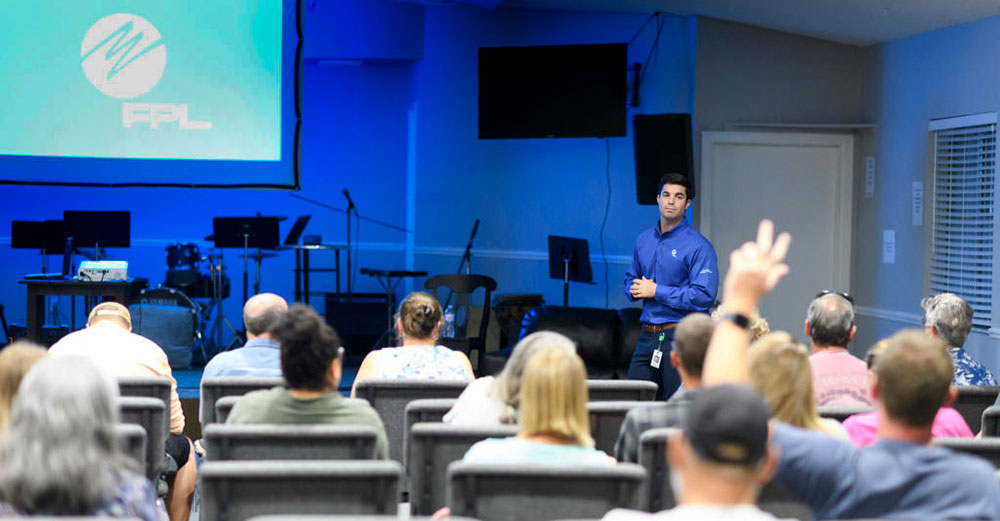
When Hurricane Irma slammed Florida in 2017, Florida Power & Light Company (FPL) residential customers served by underground power lines experienced significantly fewer outages than those in places like Kyle Eisert’s leafy neighborhood near Fort Pierce, where uprooted trees and wind-blown branches knocked out overhead power lines.
So he was eager to participate in FPL’s Storm Secure Underground Program pilot, which replaces neighborhood overhead lines with more reliable underground lines. The three-year program targets neighborhoods that lost power during Irma or 2016’s Hurricane Matthew and have a history of outages caused by trees and other vegetation.
With the program, FPL is looking for cost-effective ways to replace overhead power lines with underground lines and enhance the resiliency of the energy grid. FPL will evaluate how the performance of these lines improves overall reliability for customers.
“It was a no-brainer for me,” Eisert said after FPL buried power lines in his neighborhood as part of the pilot. “It’s a betterment to your home, your property, even your quality of life.”
“This pilot program is providing us with important, real-world information on the challenges and costs of undergrounding power lines and how all customers may benefit,” said program manager Enrique Formoso.
Placing neighborhood power lines underground helps eliminate the threat that trees, branches and other debris pose when they come into contact with overhead power lines.
FPL maintains vegetation along 15,000 miles of overhead power lines each year. But even the most robust tree clearing plan has its limits because overhead lines can still be damaged by trees from outside of FPL’s easements or public rights of way. In fact, the majority of tree-related outages during Irma came from trees that were beyond the area where FPL can trim.
FPL installs the underground lines using directional boring, which is less invasive than traditional trench digging. When a job is finished, properties are restored to their previous condition or better.
Homeowner Mary Hempstead, a neighbor of Eisert’s in Fort Pierce, said she couldn’t tell afterward that FPL had buried a power line on her property.
“Everything was cleaned up and taken care of,” she said. “I was thrilled because I think underground is the way to go. We have too many storms and they’re becoming more and more fierce.”
Since 2006, FPL has invested nearly $4 billion to make the energy grid stronger, smarter and more storm-resilient. The cost of the Storm Secure Underground Program was previously approved by the Florida Public Service Commission (PSC) and will not bring higher bills to customers who participate in the pilot.
In addition, Florida officials recently recognized the importance of undergrounding neighborhood power lines as part of a plan to further strengthen the energy grid. Florida Gov. Ron DeSantis signed into law a bill, overwhelmingly supported by the Legislature, that creates more stability for energy companies in their long-range planning to make the grid stronger and safer. FPL will seek PSC approval later this year for far-reaching plans to underground more neighborhood power lines while keeping customer bills among the lowest in the nation.